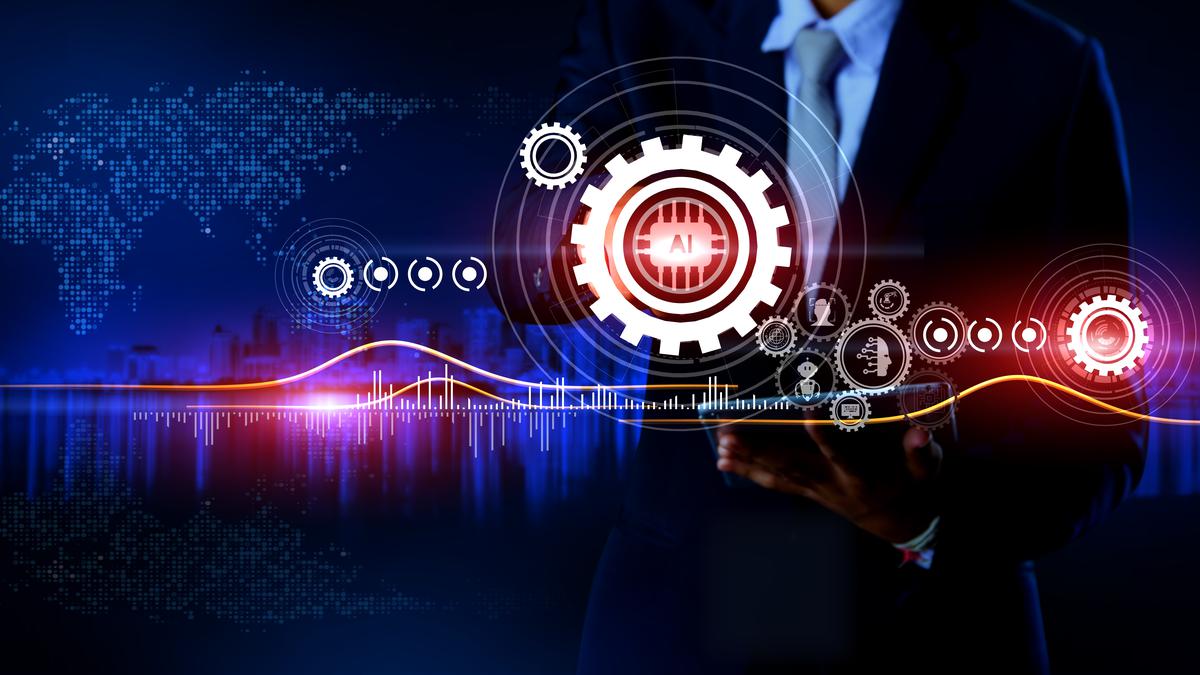
AI’s disruptive economic impact, an India check Premium
The Hindu
Artificial Intelligence could be highly disruptive, but growing advancements in AI are now a reality and being equipped with the latest tools will be an advantage
Little did we know that beyond the automated factory machines, self-driving cars, and robocops, Artificial Intelligence (AI) would one day crash into our lives, authoring poems, tipping us with pickup lines, and passing the toughest examinations. The recent rise of Large Language Models and Generative AI has sparked more interest in the progress of AI across the globe. ChatGPT was running with its servers crammed for months, and Twitter feeds were filled with quirky ChatGPT quotes followed by threads shedding light on the versatile application of such chatbots. Ethical debates on the use of generative AI have subsided in the realisation that users will have a ‘productivity-powered’ upper hand over a non-user. The subjects of worker replacements and economic growth with the rise of AI have entered the spiral that the Internet once went through.
There is broad consensus on increasing productivity by adopting AI in producing goods and services. In a study called “Generative AI at Work” (involving over 5,000 customer support agents in the Philippines), Massachusetts Institute of Technology (MIT) economists showed that AI tools boosted worker productivity by 14% and improved consumer satisfaction, leading to better treatment of customer service agents and increased employee retention. Experts suggest that generative AI may not replace employees, but employees using generative AI will replace those who do not upskill.
A recent survey among employees of LinkedIn’s top 50 companies in the United States shows that almost 70% of them found AI helping them to be faster, smarter, and more productive. Another 32% were of the opinion that while AI’s current impact may be modest, they anticipate larger gains over the next five years. Professor Erik Brynjolfsson of the MIT suggests that restructuring business processes and increased investments are essential to fully leverage AI’s productivity potential.
Research from across the world is also largely optimistic about AI’s impacts on growth. A study by PricewaterhouseCoopers (PwC) predicted an increase in global GDP by 14% or $15.7 trillion by 2030 due to ongoing technological advancements in AI. Further, a report from Goldman Sachs Research in April 2023 said that generative AI alone could raise global GDP by 7% or almost $7 trillion over a 10-year period. The report highlights generative AI’s potential to create human-like output and that its ability to break down communication barriers between humans and machines could have large positive macroeconomic effects.
The Forum for the Kent A. Clark Center for Global Markets surveyed and published the views of U.S. and European economic experts on the impact of AI on the per capita income of the U.S. and western Europe. On the question whether AI will result in a substantial increase in the growth rates of real capita income in the U.S. and western Europe over the next two decades, 44% of the U.S. experts agreed to an expected substantial increase, whereas 46% said the effects were uncertain. Among the European experts, 34% expected a substantial increase in GDP per capita, while 42% were uncertain about the effects of AI. Only 2% of experts believed that AI would not significantly impact per capita GDP; this included Professor Nicholas Bloom of Stanford, who pointed out historical data on slowed GDP growth despite technological advancements. On another question of whether a ban on generative AI chatbots could negatively impact national innovation, 62% of the European experts agreed that a ban could hinder innovation, 14% were uncertain, and only 2% disagreed.
Experts also point to multiple negative impacts of AI technologies. The first is labour replacement that AI technologies bring to the table. AI can automate repetitive tasks and with generative AI, even creative tasks can be done efficiently and fast. A research paper titled “Robots and Jobs: Evidence from US Labor Markets” by Daron Acemoglu of MIT and Pascual Restrepo of Boston University found that robot adoption has a negative effect on workers, on average — it reduces the labour share, employment and wages. These adverse effects primarily affect blue-collar workers and individuals with lower levels of education.
In “Tasks, Automation, and the Rise in U.S. Wage Inequality”, the two authors document that between 50% and 70% of changes in the U.S. wage structure over the last four decades can be attributed to relative wage declines of worker groups specialised in routine tasks in industries experiencing rapid automation. Acemoglu argues that automation reduces labour share and wages, especially when productivity gains from automation are small. His other studies also highlight distributional concerns over automation, causing inequality among workers and possible serious negative impacts on social welfare. A European Parliamentary Research Service report cites McKinsey Global Institute’s research that suggests that AI may intensify competition and deepen the technological divide among firms. Early adopters of AI may gain significant advantages, leading to a winner-takes-all scenario.











